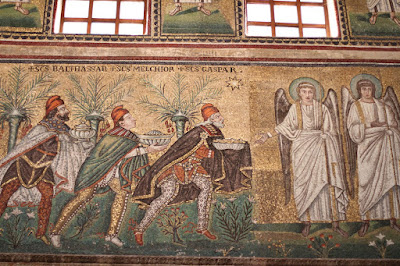
We stayed at the B&B Casa Masoli during our two days in Ravenna. In particular, we will always remember showing up late in the evening and having la nonna, Orida, greet us and show us a choice of rooms. We choose the room across from the kitchen (Suite Wolly) so when we went in and out we could peek at Orida baking something for the next day’s breakfast. The kitchen is the command center (as in many Italian houses) of this B&B.
Well, the reason we stopped in Ravenna on our way north was because we had been hearing for so long about the mosaics. "You must see the mosaics!" In fact, eight sites in Ravenna, all except one featuring mosaics, are included on the UNESCO World Heritage list and this fit in perfectly with the spirit of this trip to Italy.
These UNESCO sites include and the order we visited them:
- Day 1 - Basilica of San Vitale Il Museo Nazionale is the complex that contains the Basilica and Mausoleum of Galla Placidia. Most visitors pay the fee and head straight for the mosaics, ignoring the museum. Or you can spend some time in the museum that when we were there had an interesting permanent collection as well as a video show about how the mosaics have been restored through the centuries.
- Day 1 - Mausoleum of Galla Placidia This site is just a few steps from San Vitale, in the same museum complex so it makes sense to see this with San Vitale.
- Day 1 – Basilica of Sant’Apollinare Nuovo
- Day 1 – Baptistry of Neon Notice how Jesus looks in these mosaics, specifically with a beard, and compare that to the imagery of Jesus in the Arian Baptistry, without a beard. The Baptistry of Neon is also called the Orthodox Baptistry to distinguish it from the Arian Baptistry. There was a tussle in early Christian doctrine about the nature of Jesus. Arianism held that Jesus was created by God the Father and therefore inferior. The opposing side, the Nicenes / Trinitarians who won eventually, held that the Trinity is three in one. An example of the winning side writing history is in the Basilica of Sant’Apollinare Nuovo where a mosaic scene of the court of Theodoric the Great (an Arian king) was removed and replaced with a strange curtain scene. Except, the modifiers of the mosaic left a disembodied hand on one of the columns. On purpose?
- Day 1 - Archiepiscopal Chapel The museum includes the chapel. Once in the museum you could easily walk by the chapel and miss it, so stay attentive.
- Day 2 - Arian Baptistry Note how young Jesus looks in these mosaics. Jesus is without a beard. Why the Arians portrayed Jesus as clean-shaven Jesus we (us writing this blog) are not sure. We read here that it emphasizes Christ’s physical humanity. And what’s wrong with a beard representing physical humanity? Maybe, more simply it was just that the Arian imagery was forged in closer proximity to Roman and Hellenistic aesthetics so those influences prevail. Later, other Christ filters evolved and Jesus sporting a beard supported the meaning better?
- Day 2 - Mausoleum of Theodoric This site features no mosaics and is just on the outer edge of the city, beyond the train station. It is a 20-30 minute walk from the historic center.
- Day 2 - Basilica of Sant’Apollinare in Classe We “borrowed” bikes to get to this last site. It’s quite far by foot to get to. With bikes it took about 25 minutes riding on well-defined bike paths – and relatively isolated from vehicle traffic. To borrow a bike go to the tourist office.
Across from the tourist office (location) where we borrowed bikes (to go to Sant’Apollinare in Classe) there is a chocolate shop called Leonardi Dolciumi that we stopped in and picked up some very nice chocolate. The founder, a woman called Elisa?, was there and it was a pleasure to speak with her about her passion for chocolate. In particular, she makes a signature bar called Cazzata a ferro which was quite nice. On the back of the Dolciumi bag there is this saying “Nove persone su dieci amano il cioccolato, la decima mente.” by Anthelme Brillat Savarin. It translates to “Nine out of ten people love chocolate, the tenth is lying.”
Where did we eat while in Ravenna? The first night we rolled in, we ate at La Gardèla, a popular choice at via Ponte Marino 3 which was satisfying. The better restaurant, in our opinion was the second night we ate out and that was Osteria del Battibecchi at via della Tesoreria Vecchia, 16. It’s a little hard to find – just go down the alley even if it doesn’t look like a restaurant would be there – but it is well worth the trouble. The name battibecchi means “bickering or squabbling” as in what hens might engage in. This osteria was Slow Food recommended and was true to the spirit. The last night we were in Ravenna we ate at the popular Il Melarancio. Yes it is popular in TripAdvisor but that’s not saying much – sorry – the food was so-so and in some cases outright bad (pasta we had in one dish so rubbery and tasteless we were surprised). The real turn off though was the waiter brought our dishes out in a unusual sequence that resulted in one of us eating and the other watching for several dishes. Go to Battibecchi or Giradèla and enjoy yourself instead. That said, La Piadina del Melarancio (we believe the same owners) is a good lunch stop for this classic regional “fast food” – la piadina.
La Piadina

Osteria Battibecchi - Ravenna


Il Museo Nazionale di Ravenna - Brochure



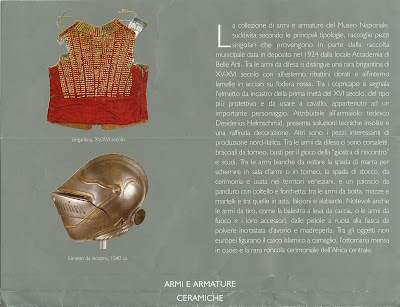


Mausoleo di Teodorico


Dolciumi Chocolate
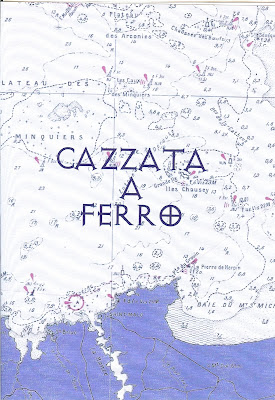

Dante's Tomb - Ravenna

Palazzo di Teodorico


Sant'Apollinare in Classe

Arian Baptistry Outside and Inside


Mausoleo di Galla Placidia

Ravenna - Annotated Map


Basilica di San Vitale - Justinian Panel

Basilica di San Vitale - Theodora Panel
Basilica di San Vitale

Combined Ticket

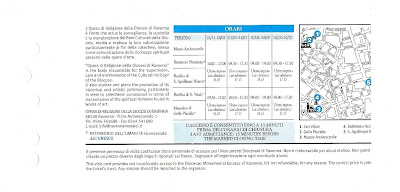
Sant'Apollinare Nuovo - The Arian Hand
Neonian Baptistry
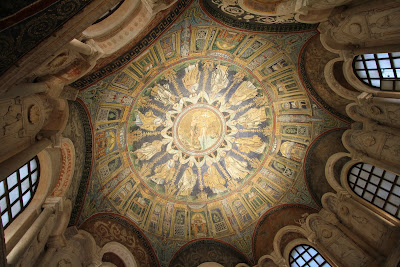

Osteria Battibecchi - Ravenna


Il Museo Nazionale di Ravenna - Brochure







Mausoleo di Teodorico


Dolciumi Chocolate


Dante's Tomb - Ravenna

Palazzo di Teodorico


Sant'Apollinare in Classe

Arian Baptistry Outside and Inside


Mausoleo di Galla Placidia

Ravenna - Annotated Map


Basilica di San Vitale - Justinian Panel

Basilica di San Vitale - Theodora Panel

Basilica di San Vitale

Combined Ticket


Sant'Apollinare Nuovo - The Arian Hand

Neonian Baptistry

Wonderful commentary of your time in Ravenna. As I am planning to visit this summer, this will be incredibly helpful ... and inspiring! Thank you.
ReplyDelete